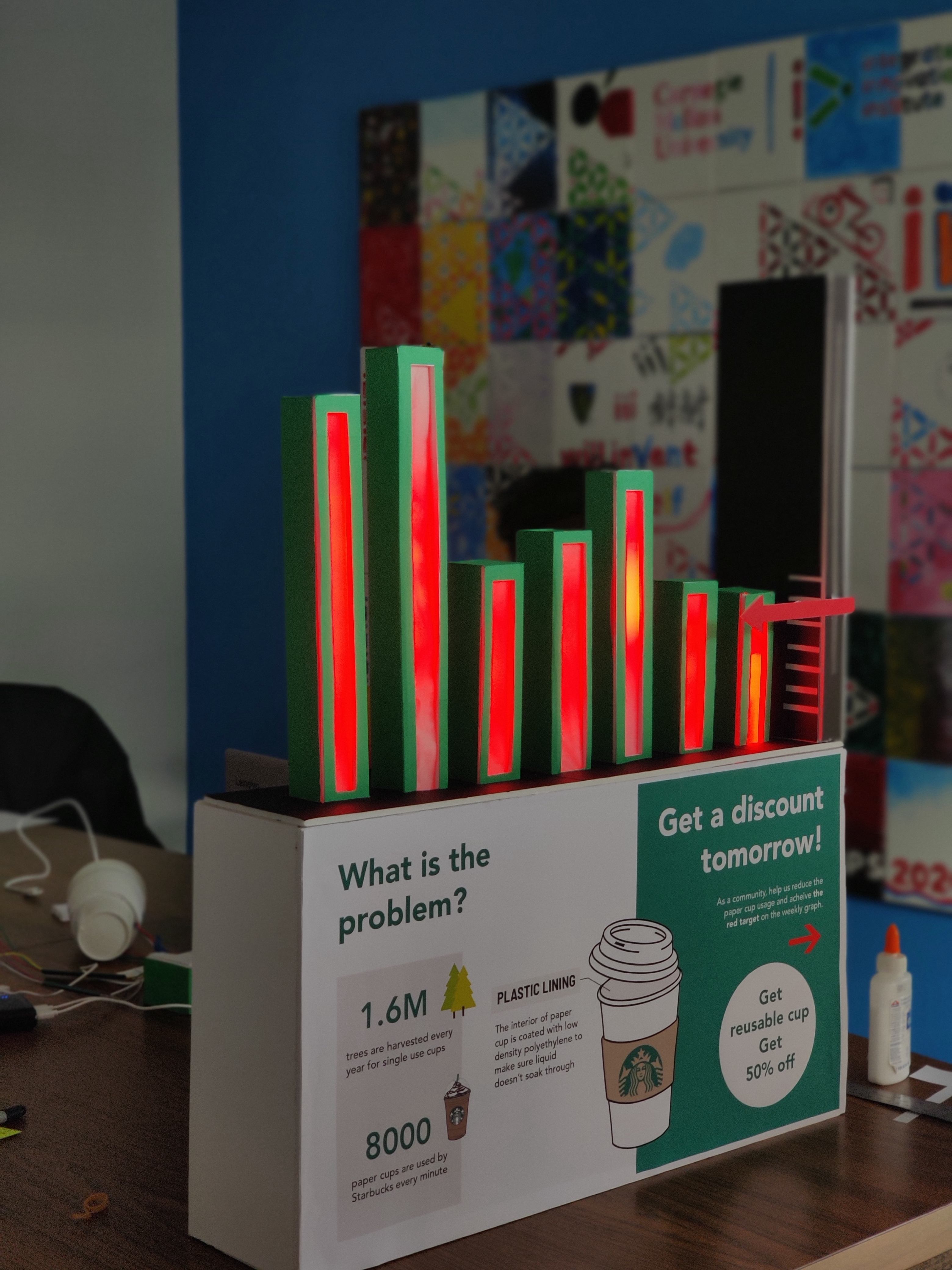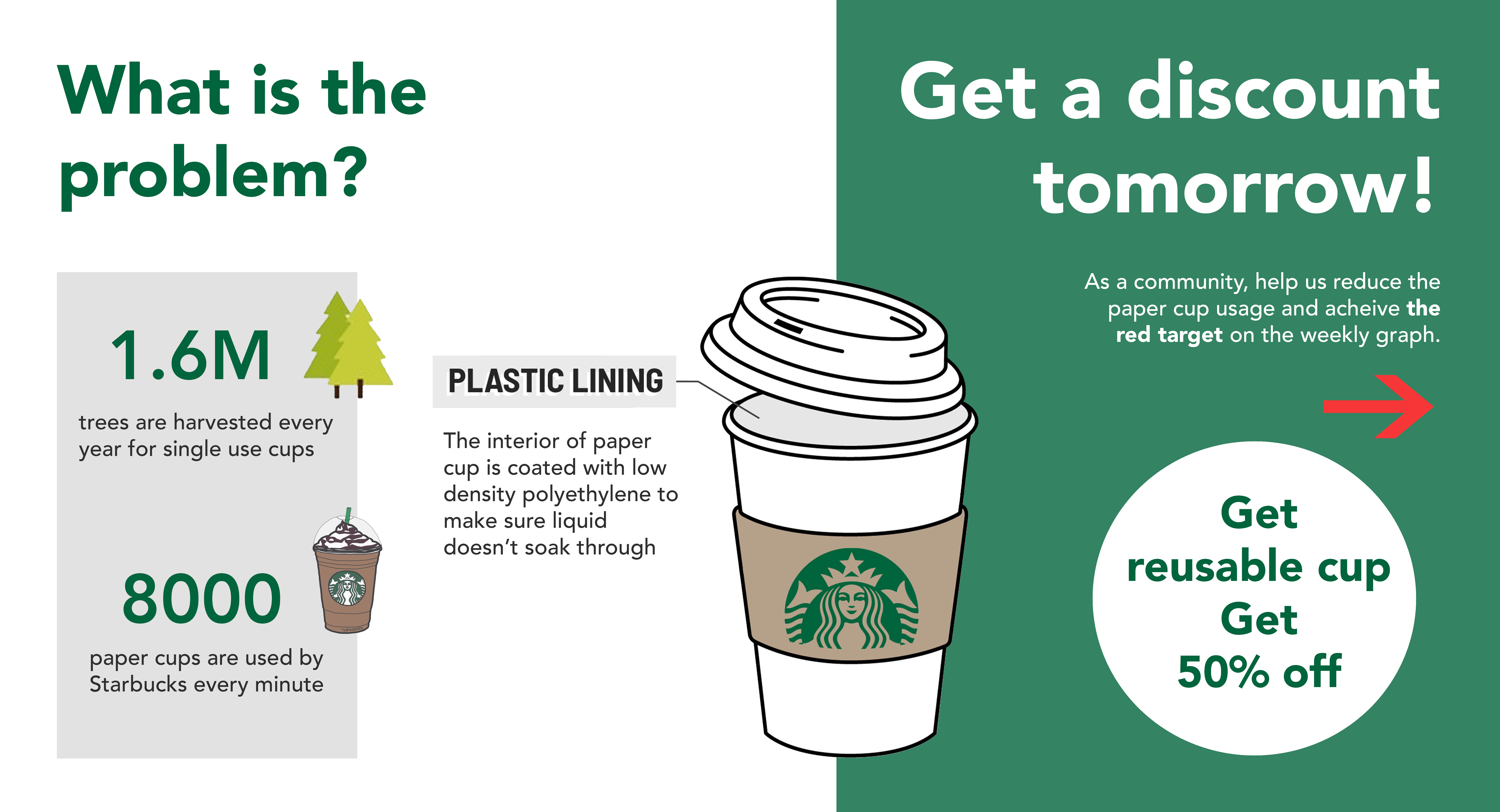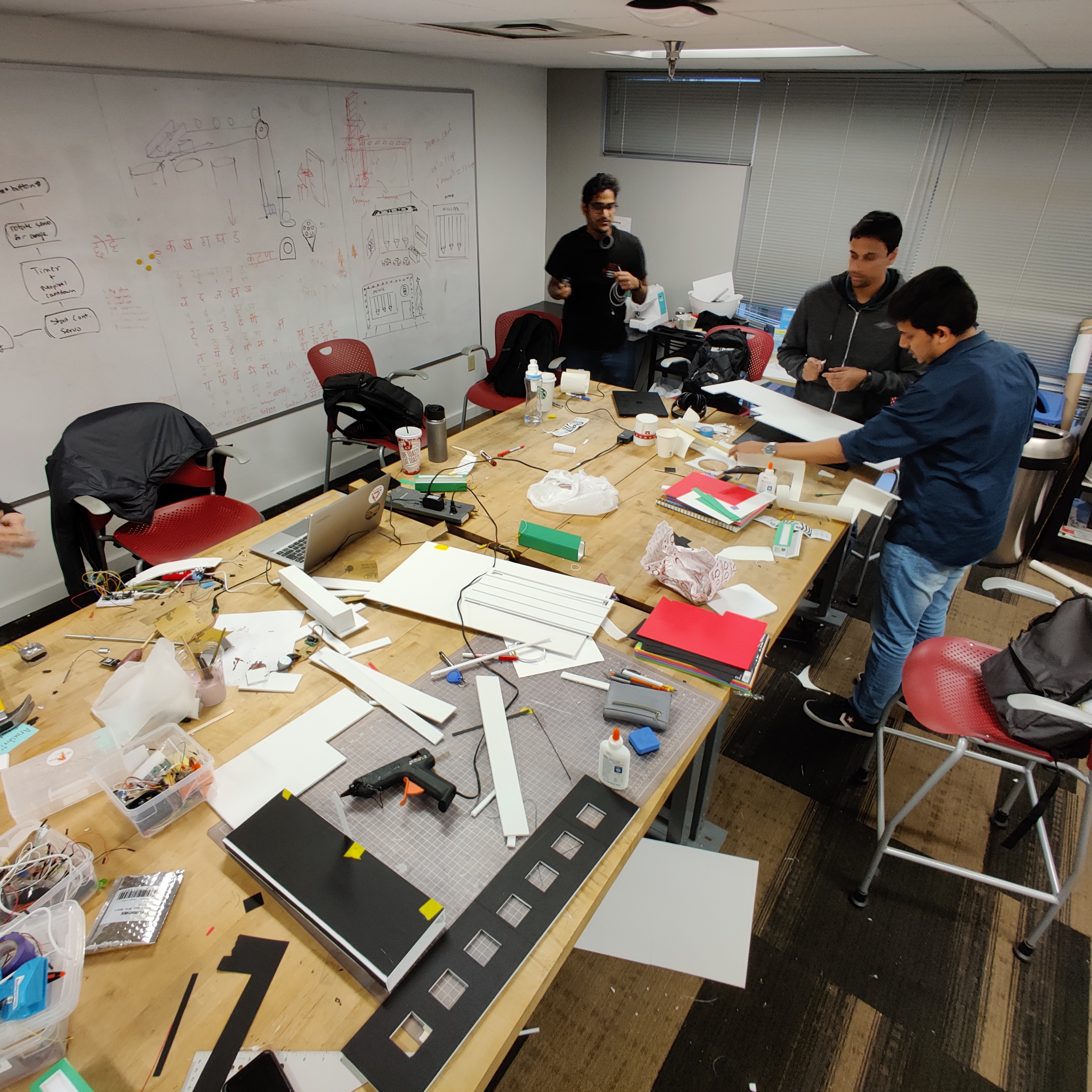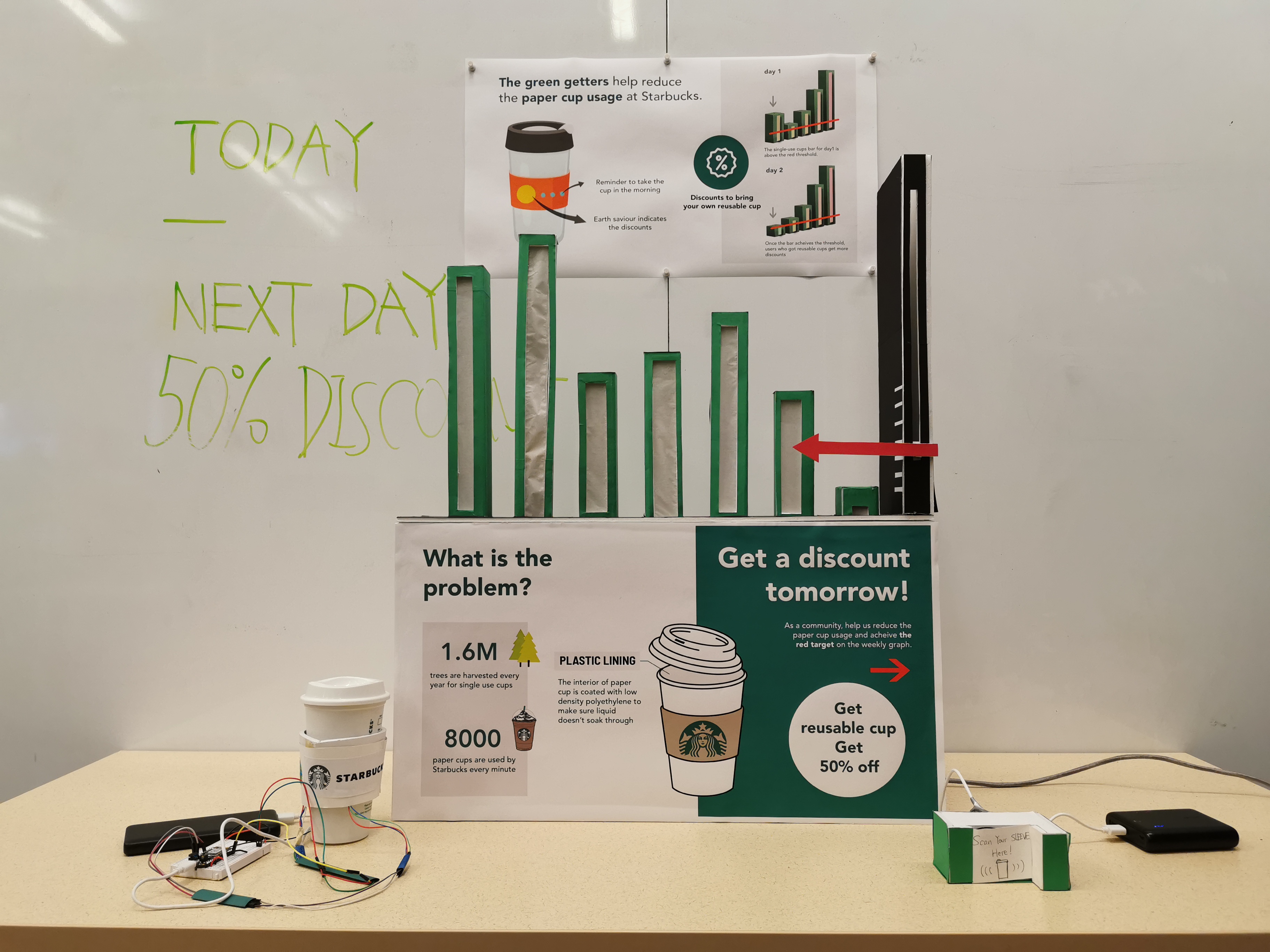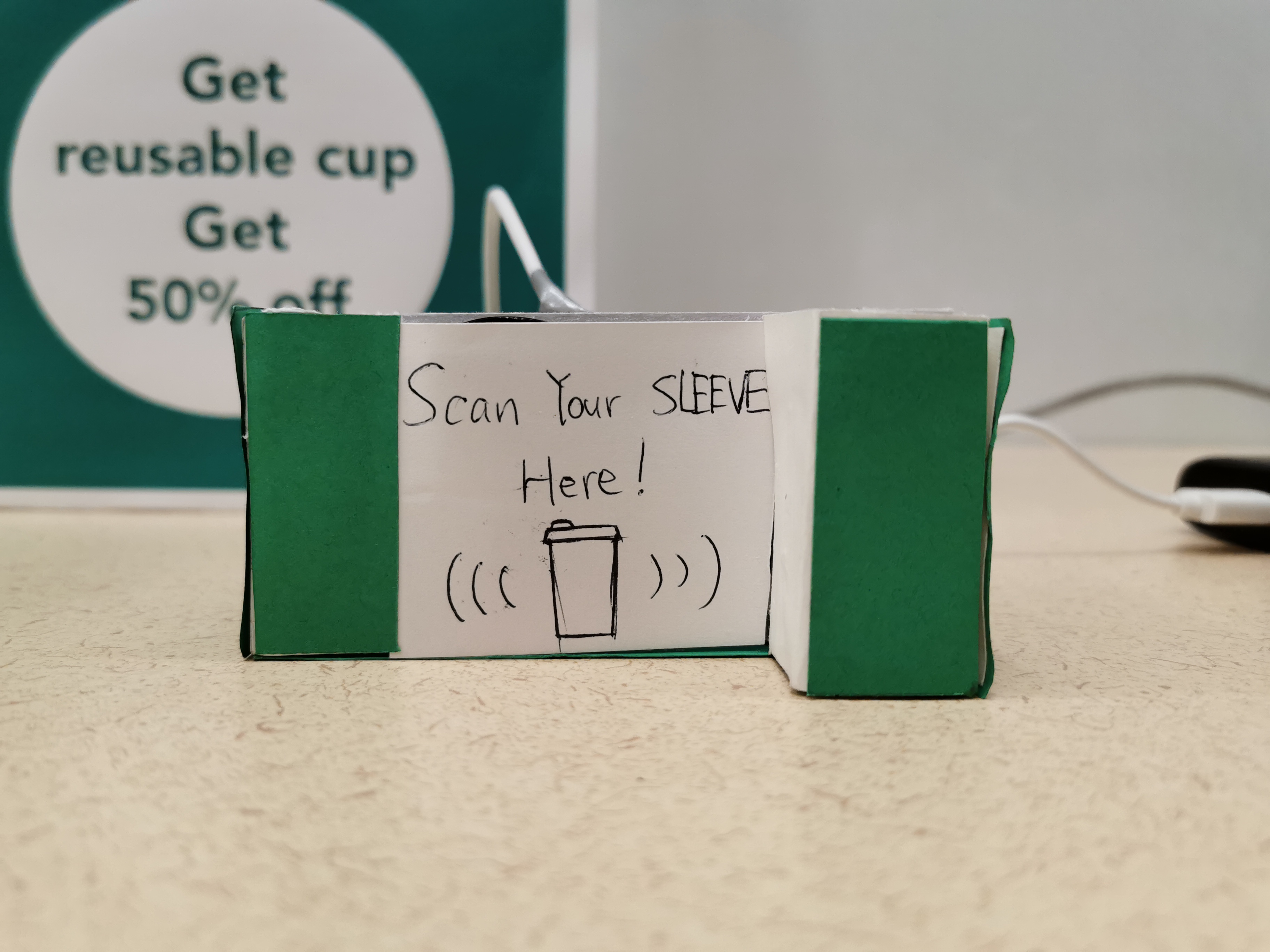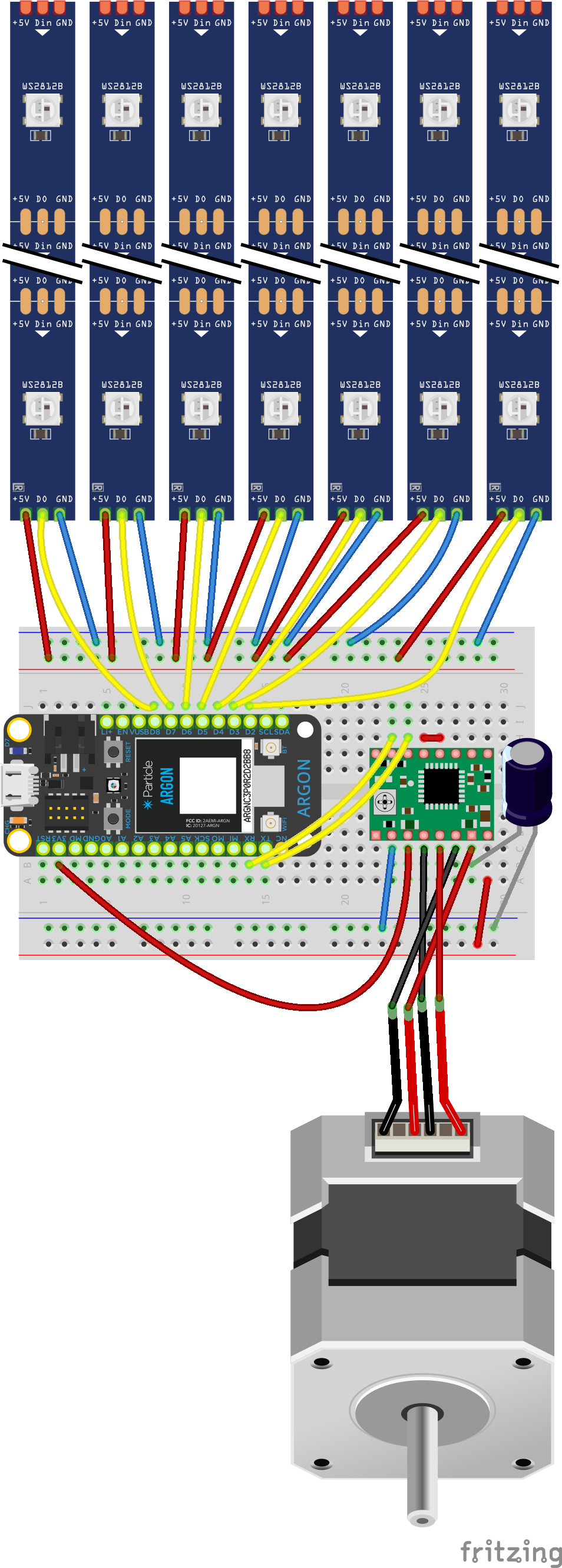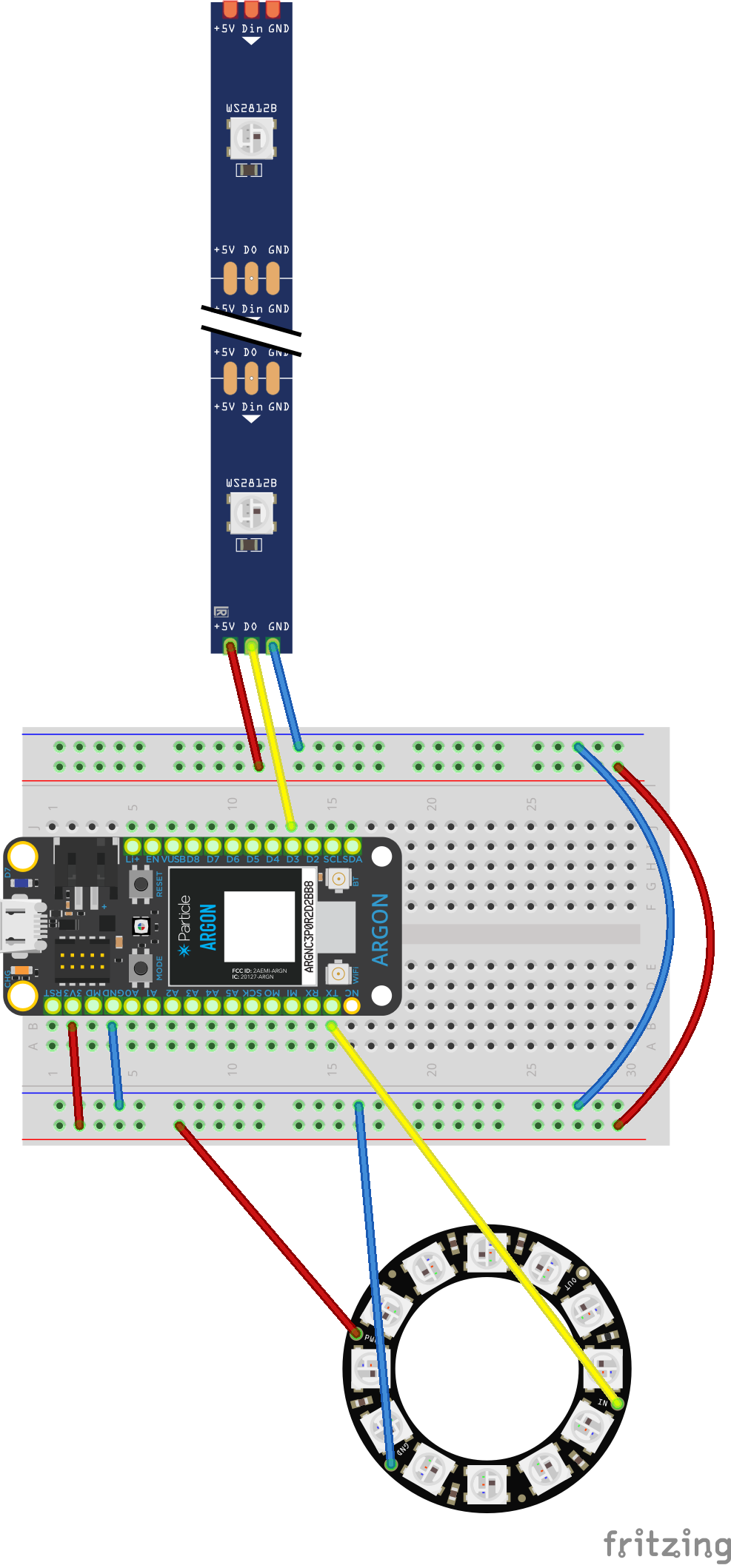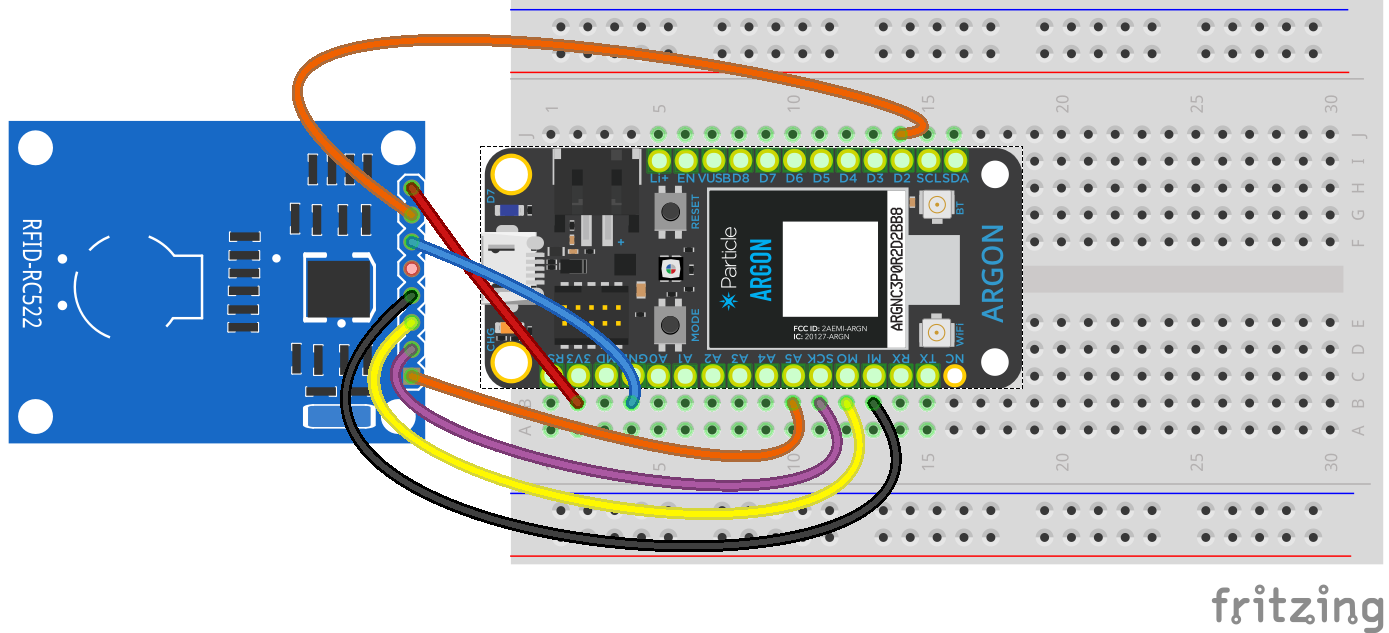Big idea
In our research, we found that 8000 paper cups were being used at Starbucks every minute. Even though paper cups are perceived as eco-friendly, the plastic lining inside it makes it extremely difficult to recycle it. Although Starbucks is doing its part in conserving the environment by focussing on product innovation - we wanted to approach this from a different lens.
Goals
To understand and build a solution, we considered the Starbucks at Forbes Avenue. The goal of the project was to motivate and make the users able to use their reusable cups through triggers like reminders and alerts. Based on the Fogg behavior model prescribed by BJ Fogg, this approach was intended to create a behavior change among the customers by reducing paper cup usage.
Why did you make it -
We believe that our solution can be extended to other environments as well where the use of plastic is prevalent. We also believe that every action taken towards conserving the environment will lead to a cleaner and greener future.
What are your motivations -
The biggest motivation was to bring about change in consumer behavior by making them aware of their actions - which would ultimately help us conserve the environment and create a better future.
